Home>diy>Building & Construction>How To Be An Effective Construction Project Manager


Building & Construction
How To Be An Effective Construction Project Manager
Modified: December 7, 2023
Learn the essential skills and strategies to become an effective construction project manager. Explore the ins and outs of building construction with our comprehensive guide.
(Many of the links in this article redirect to a specific reviewed product. Your purchase of these products through affiliate links helps to generate commission for Storables.com, at no extra cost. Learn more)
Introduction
Welcome to the exciting world of construction project management! As a construction project manager, you play a crucial role in overseeing and coordinating all aspects of a building construction project. Your skills, knowledge, and ability to effectively manage a team will determine the success of the project and leave a lasting impact on the built environment.
In this comprehensive guide, we will explore the essential skills and strategies required to be an effective construction project manager. Whether you are new to the field or looking to enhance your existing skills, this article will provide valuable insights and practical tips to help you succeed in this demanding yet rewarding profession.
Construction project management involves a wide range of responsibilities, from planning and organizing to budgeting and problem-solving. You will collaborate with various stakeholders, such as architects, engineers, contractors, subcontractors, and clients, to ensure the project is completed on time, within budget, and to the highest quality standards.
In addition to technical knowledge, a successful construction project manager must possess strong leadership skills, effective communication abilities, and the ability to manage resources efficiently. Throughout this article, we will delve into these areas and provide actionable advice on how to develop and enhance these critical competencies.
Furthermore, we will discuss the importance of quality control, compliance, risk management, and safety measures in construction projects. By understanding these key aspects of project management, you will be able to mitigate risks and ensure the successful delivery of each project.
Finally, we will explore the importance of building and maintaining client relationships. As a construction project manager, your ability to communicate effectively, meet expectations, and go above and beyond to deliver exceptional results will play a significant role in securing future projects and growing your professional network.
By the end of this article, you will have a solid understanding of the core competencies required to be an effective construction project manager. So, let’s dive in and get started on this exciting journey!
Key Takeaways:
- Effective construction project management requires strong leadership, communication, and adaptability. Prioritizing quality, compliance, and safety ensures successful project delivery and client satisfaction.
- Continuous learning and professional development are essential for construction project managers to stay current with industry trends and enhance their skills. Embracing technology and soft skills fosters growth and career advancement.
Read more: What Is Construction Management
Understanding the Role of a Construction Project Manager
The role of a construction project manager is multifaceted and requires a diverse skill set. As a project manager, you are responsible for overseeing the planning, execution, and successful completion of construction projects. Your primary focus is on ensuring that the project is delivered on time, within budget, and meets the quality standards set by the client.
One of the key responsibilities of a construction project manager is to collaborate with stakeholders, including architects, engineers, contractors, subcontractors, and suppliers. You will work closely with these individuals to establish project goals, define project scopes, and develop a comprehensive project plan.
Effective project managers possess strong leadership skills that enable them to guide and inspire their teams. You will be responsible for assembling a team of skilled professionals and assigning tasks and responsibilities. It is crucial to motivate and empower your team members, fostering a collaborative and productive work environment.
Communication plays a vital role in the success of any construction project. As a project manager, you must be an excellent communicator, both orally and in writing. You will be required to communicate project updates, address concerns, and resolve conflicts effectively. Keeping all stakeholders informed and engaged throughout the project timeline is essential for maintaining transparency and building trust.
Construction projects can be complex, with numerous moving parts. Project managers must have strong organizational and planning skills to ensure smooth project execution. From creating detailed project schedules to coordinating resources and managing budgets, your ability to effectively organize and plan will set the foundation for project success.
Furthermore, construction project managers must possess a solid understanding of construction industry regulations, codes, and best practices. Compliance with these standards is imperative to ensure the safety of workers and the structural integrity of the building.
As a project manager, you will also be responsible for managing project risks. This includes identifying potential risks, developing risk mitigation strategies, and implementing contingency plans to address unforeseen challenges. Your ability to anticipate and proactively address risks will contribute to the smooth and successful execution of the project.
In summary, the role of a construction project manager is diverse and demanding. You must possess strong leadership, communication, and organizational skills. Understanding the project’s goals, collaborating with stakeholders, and ensuring compliance and safety are critical components of your role. By effectively managing risks and leading your team, you will guide the project to successful completion.
Developing Strong Leadership Skills
As a construction project manager, strong leadership skills are essential to effectively manage your team and drive the success of the project. Leadership goes beyond simply giving instructions; it involves inspiring, motivating, and guiding your team towards a common goal. Here are key strategies to develop strong leadership skills:
- Lead by Example: As a project manager, your actions and behaviors set the tone for the entire team. Demonstrate professionalism, accountability, and a strong work ethic. By leading by example, you establish a culture of excellence and inspire your team to give their best.
- Build Relationships: Foster strong relationships with your team members by actively listening, providing support, and showing genuine interest. Celebrate their achievements, provide constructive feedback, and create a positive work environment. Strong relationships will enhance collaboration and productivity.
- Effective Communication: Communication is at the core of leadership. Clearly articulate project goals, expectations, and deadlines to your team. Listen to their ideas, concerns, and feedback. Encourage open and honest communication, and be accessible to address any issues that arise.
- Empower and Delegate: Trust your team members and delegate tasks based on their strengths and expertise. Empower them to make decisions and take ownership of their work. Provide guidance and support, but also give them the space to grow and learn from their experiences.
- Set Clear Goals and Expectations: Establish clear project goals, milestones, and performance expectations. Ensure that your team understands the objectives and has the necessary resources to achieve them. Regularly monitor progress and provide feedback to keep everyone on track.
- Problem-Solving and Decision-Making: As a leader, you will face challenges and decisions that can impact the project’s success. Develop strong problem-solving and decision-making skills to approach issues objectively and find effective solutions. Involve your team in the decision-making process to foster collaboration and ownership.
- Continual Learning: Stay up-to-date with industry trends, new technologies, and best practices. Encourage your team members to engage in professional development and provide opportunities for learning and growth. Continual learning will enhance your leadership skills and keep you at the forefront of the industry.
Developing strong leadership skills is an ongoing process. Reflect on your experiences, seek feedback from your team, and be willing to adapt and grow as a leader. By focusing on these strategies, you will build a strong and cohesive team, inspire excellence, and successfully lead your construction projects to completion.
Effective Communication with Stakeholders
Effective communication is crucial for successful construction project management, as it ensures that all stakeholders are well-informed, engaged, and working towards a common goal. Stakeholders in a construction project can include architects, engineers, contractors, subcontractors, suppliers, and clients. Here are some key principles to follow for effective communication:
- Clear and Concise Communication: Use clear and concise language to convey your message, avoiding jargon or technical terms that may confuse stakeholders. Present information in a straightforward manner, ensuring that it is easily understood by both technical and non-technical individuals.
- Active Listening: Listening is a critical component of effective communication. Take the time to listen to what stakeholders have to say. Show genuine interest, ask clarifying questions, and seek to understand their perspectives. This will foster trust, collaboration, and stronger working relationships.
- Choose Appropriate Communication Channels: Determine the most suitable communication channels for different stakeholders and situations. Email, phone calls, video conferences, and in-person meetings are common methods of communication. Choose the channel that best accommodates the needs of the stakeholders and ensures clear and efficient communication.
- Timely and Responsive Communication: Respond to stakeholders’ inquiries and concerns promptly. Timely communication helps to prevent misunderstandings, resolve issues quickly, and keep the project moving forward. Regularly update stakeholders on project progress, milestones, and any changes that may impact the project’s timeline or scope.
- Tailor Your Message: Customize your communication approach to suit the needs of different stakeholders. Adjust your language, tone, and level of technical detail depending on who you are communicating with. By speaking their language and addressing their specific concerns, you will enhance understanding and collaboration.
- Document Everything: Keep thorough records of all project-related communication, including meeting minutes, emails, and any other relevant documentation. This ensures accountability, clarity, and helps to avoid misunderstandings or disputes down the line.
- Manage Conflict Effectively: Construction projects can encounter conflicts or disagreements. It is important to address these conflicts in a timely and respectful manner. Listen to all parties involved, consider different perspectives, and work towards a mutually beneficial resolution. Effective conflict management fosters positive working relationships and minimizes disruptions to the project.
- Regular Project Meetings: Schedule regular project meetings to provide updates, gather input, and address any concerns. These meetings allow stakeholders to stay informed, ask questions, and provide valuable feedback. It is a chance to align everyone’s understanding and expectations, ensuring smoother project execution.
By following these principles of effective communication, you can establish and maintain strong relationships with stakeholders, promote collaboration, and ensure that information flows smoothly throughout the construction project. Effective communication enhances transparency, mitigates misunderstandings, and contributes to the overall success of the project.
Planning and Organizing Construction Projects
Planning and organizing are critical components of construction project management. They involve creating a comprehensive roadmap for the project, allocating resources efficiently, and setting the project up for success. Here are key steps to effectively plan and organize construction projects:
- Define Project Objectives: Clearly define the project’s objectives, including its scope, timeline, and deliverables. Identify the desired outcomes and ensure they align with the client’s requirements and expectations.
- Create a Project Plan: Develop a detailed project plan that includes the tasks, milestones, and critical path of the project. Consider dependencies between tasks and develop a realistic timeline. Break down larger tasks into smaller, manageable activities to facilitate easier tracking and completion.
- Allocate Resources: Identify the resources needed to execute the project successfully. This includes human resources, equipment, materials, and subcontractors. Allocate resources based on their availability, expertise, and suitability for the specific project needs.
- Manage the Budget: Develop a comprehensive budget that accounts for all project costs, including labor, materials, permits, and contingencies. Regularly track and monitor expenses to ensure they stay within budget. Implement cost control measures and adjust the budget as necessary to manage any changes or unexpected costs.
- Risk Assessment and Mitigation: Identify potential risks and develop strategies to mitigate them. This includes conducting a thorough risk assessment, analyzing potential hazards, and developing contingency plans. Regularly review and update the risk management plan throughout the project lifecycle.
- Obtain Permits and Approvals: Understand the regulatory requirements and obtain the necessary permits and approvals for the project. This includes building permits, environmental clearances, and any other applicable certificates. Ensuring compliance with regulations and obtaining approvals in a timely manner is crucial to avoid delays or penalties.
- Establish Effective Communication Channels: Set up clear communication channels with all stakeholders to ensure smooth information flow. Regularly communicate project updates, changes, and milestones to keep everyone informed. Foster open communication to address any concerns or issues promptly.
- Monitor Progress: Continuously monitor the progress of the project against the established plan. Keep track of key performance indicators, such as milestones achieved, budget spent, and resource utilization. Regularly assess progress and adjust the project plan as necessary to stay on track.
- Document Everything: Maintain detailed documentation throughout the project, including contracts, change orders, meeting minutes, and progress reports. This documentation serves as a valuable record of the project’s history and supports proactive decision-making and problem resolution.
- Facilitate Collaboration: Foster collaboration within the project team and between stakeholders. Encourage regular communication and coordination among team members to ensure tasks are completed on time and efficiently. Utilize collaboration tools and software to streamline communication and ensure everyone has access to the most recent project information.
By meticulously planning and organizing construction projects, project managers can set a solid foundation for success. Effective planning helps to anticipate and manage potential challenges, control costs, and ensure efficient resource allocation. Organizing the project enables seamless execution, effective monitoring, and timely adjustments to keep the project on track towards successful completion.
Read more: What Is The Scope Of Construction Management
Managing Budgets and Resources
Managing budgets and resources is a critical aspect of construction project management. Effectively allocating and controlling resources while staying within budget are key to the success of any construction project. Here are key strategies for managing budgets and resources:
- Develop a Comprehensive Budget: Start by creating a detailed budget that includes all anticipated costs for the project. This should encompass labor, materials, equipment, subcontractors, permits, insurance, and any other relevant expenses. Be sure to include a contingency fund to account for unforeseen costs or changes in project scope.
- Track and Control Expenses: Monitor expenses throughout the project to ensure they align with the budget. Keep accurate records of all expenditures and compare them regularly against the budgeted amounts. Implement effective cost control measures to avoid unnecessary spending or overruns.
- Optimize Resource Allocation: Efficiently allocate resources, such as human resources, equipment, and materials, to maximize their utilization. Ensure that each resource is assigned to the right task and is utilized effectively. Consider factors such as availability, skillsets, and experience when assigning resources to specific project activities.
- Negotiate Contracts: Seek competitive bids from vendors and subcontractors to obtain the best prices for materials, equipment, and services. Properly evaluating and negotiating contracts can help reduce costs and increase the overall project efficiency.
- Implement Value Engineering: Value engineering involves analyzing the project’s requirements and identifying opportunities to reduce costs or improve efficiency without sacrificing quality. Look for alternative materials or construction methods that offer cost savings without compromising on function or aesthetics.
- Consider Long-Term Savings: While managing the project budget, also consider the long-term savings. Investing in energy-efficient materials, technologies, or systems may result in reduced operating costs for the client over the lifespan of the building. Evaluate the potential long-term savings and discuss them with the project stakeholders.
- Monitor Resource and Labor Productivity: Regularly assess resource and labor productivity to ensure they are aligned with the project’s objectives. Identify areas where productivity can be improved and take necessary measures to address inefficiencies. Effective resource and labor management can significantly impact the project’s budget and schedule.
- Communication and Collaboration: Effective communication and collaboration with stakeholders are crucial for managing budgets and resources. Regularly update them on project progress, discuss any budget changes or resource needs, and address concerns or challenges proactively. Foster open lines of communication to maintain transparency and resolve issues promptly.
- Periodic Budget Reviews: Conduct periodic budget reviews to assess the project’s financial performance. Identify any budget variances, analyze their causes, and take corrective measures if needed. Communicate these findings with the project team and stakeholders to ensure alignment and make informed decisions.
- Adaptability and Flexibility: Construction projects are dynamic, and changes are inevitable. It is important to be adaptable and flexible in managing budgets and resources. Anticipate potential changes, budget adjustments, or unforeseen expenses and develop strategies to handle them while minimizing disruptions to the project.
By diligently managing budgets and resources, construction project managers can ensure financial efficiency, optimize resource utilization, and deliver projects on time and within budget. Effective budget and resource management contribute to the overall success of the project and drive client satisfaction.
Ensuring Quality Control and Compliance
Quality control and compliance are crucial aspects of construction project management. Ensuring that construction projects meet the required quality standards and comply with applicable regulations is essential for delivering a successful project. Here are key strategies for ensuring quality control and compliance:
- Establish Quality Control Procedures: Develop a comprehensive set of quality control procedures that outline the project’s quality objectives, standards, and processes. Clearly communicate these procedures to the project team and ensure that they are followed throughout every phase of the project.
- Perform Regular Inspections: Conduct regular inspections and walkthroughs to assess the quality of workmanship and compliance with design specifications and building codes. Identify any deficiencies or issues that need to be addressed promptly. Maintain proper documentation of inspection findings and corrective actions taken.
- Employ Quality Control Technologies: Leverage technology tools, such as Building Information Modeling (BIM) and automated inspection software, to enhance the quality control process. These tools can streamline inspections, improve documentation, and facilitate collaboration among stakeholders.
- Work with Reliable Suppliers and Contractors: Partner with reputable suppliers and contractors who have a track record of delivering high-quality work. Ensure that they have the necessary certifications and qualifications to meet industry standards and comply with relevant regulations.
- Implement Quality Assurance Processes: Develop and implement quality assurance processes to proactively identify potential risks or issues and address them before they impact the project. This may involve conducting quality audits, reviewing contractor qualifications, and performing materials testing.
- Adhere to Building Codes and Regulations: Familiarize yourself with the applicable building codes, regulations, and permits required for the project. Ensure that the project complies with these standards to maintain safety and legality. Stay updated with changes in regulations and incorporate them into the project plan.
- Document Control: Establish a robust document control system to effectively manage project documentation. This includes maintaining accurate records of design drawings, specifications, material certifications, change orders, and any other relevant documents. This documentation serves as evidence of compliance with quality standards and regulatory requirements.
- Continuous Training and Education: Invest in training and education programs for the project team to enhance their understanding of quality control and compliance. Stay informed about industry best practices and new technologies to ensure that the project is aligned with the latest quality standards.
- Third-Party Inspections and Certifications: Engage third-party inspectors or certification agencies to provide unbiased assessments of the project’s quality and compliance. These independent assessments offer additional assurance and validate that quality control measures are being effectively carried out.
- Address Non-Compliance Promptly: If non-compliance issues arise during the project, address them promptly and take corrective actions to rectify the situation. Communicate openly with stakeholders, document the steps taken to resolve the issues, and implement measures to prevent similar issues in the future.
By implementing strong quality control and compliance measures, construction project managers can ensure that projects are built to the required standards, meet client expectations, and comply with regulations. This not only enhances the overall quality of the construction but also mitigates risks, reduces the likelihood of rework, and fosters a reputation for excellence in the industry.
Managing Risk and Problem Solving
In construction project management, managing risk and effectively solving problems are essential skills. Construction projects often involve inherent risks and unexpected challenges that can impact timelines, budgets, and overall project success. Here are key strategies for managing risk and problem solving:
- Identify and Assess Risks: Start by identifying potential risks that could affect the project. This includes analyzing project scope, budget, timeline, and external factors such as weather conditions, regulatory requirements, and market conditions. Conduct a comprehensive risk assessment to evaluate the probability and impact of each risk.
- Develop a Risk Management Plan: Develop a risk management plan that outlines strategies for mitigating and addressing identified risks. This plan should include risk prevention measures, contingency plans, and risk transfer or sharing strategies, such as obtaining appropriate insurance coverage.
- Proactive Problem-Solving: Approach problems with a proactive mindset and identify solutions before they become larger issues. Encourage open communication and collaboration within the project team to gather diverse perspectives and generate creative solutions.
- Establish Effective Communication: Create an environment of open and transparent communication, where team members feel comfortable reporting problems or potential risks. Ensure that everyone understands the importance of sharing information and promptly addressing issues to prevent them from escalating.
- Utilize Risk Analysis Tools: Utilize tools and techniques such as SWOT analysis, decision trees, and Monte Carlo simulations to assess and quantify risks. These tools can help identify the most critical risks and prioritize mitigation efforts accordingly.
- Monitor and Review: Regularly monitor the project’s progress and assess whether any new risks have emerged or existing risks have evolved. Review the effectiveness of risk mitigation strategies and make necessary adjustments to ensure their continued relevance.
- Maintain Documentation: Document all risks, issues, and problem-solving efforts throughout the project. Proper documentation helps track the resolution of problems, facilitates knowledge transfer, and provides a historical reference for future projects.
- Collaboration with Stakeholders: Engage stakeholders, such as clients, contractors, and subcontractors, in the risk management process. Their input and expertise can help identify potential risks and contribute to developing effective mitigation strategies.
- Encourage Continuous Learning: Foster a culture of continuous learning and improvement within the project team. Encourage individuals to share lessons learned from past projects and apply those insights to future endeavors. This proactive approach helps to minimize the recurrence of similar problems and enhances problem-solving skills.
- Adaptability and Flexibility: Construction projects are dynamic, and unexpected challenges may arise. Be adaptable and flexible in responding to changes, adjusting strategies, and finding alternative solutions. Anticipate that not all risks can be eliminated, but with preparedness and flexibility, you can effectively manage them.
By effectively managing risk and solving problems, construction project managers can minimize project delays, control costs, and improve overall project outcomes. Implementing thorough risk management practices and fostering a problem-solving mindset throughout the project team contributes to successful project delivery.
Always communicate clearly and regularly with your team and stakeholders. This helps to ensure everyone is on the same page and can prevent misunderstandings or delays.
Ensuring Safety on the Construction Site
Safety is a top priority in construction project management. Construction sites can be hazardous environments, and it is the responsibility of the project manager to ensure the safety and well-being of all workers and stakeholders. Here are key strategies for ensuring safety on the construction site:
- Create a Comprehensive Safety Plan: Develop a comprehensive safety plan that outlines safety procedures, guidelines, and protocols specific to the project. This plan should include information on hazard identification, risk assessment, emergency response plans, and safety training requirements.
- Hazard Identification and Risk Assessment: Regularly assess the construction site for potential hazards and conduct thorough risk assessments. Identify potential risks and implement measures to eliminate or control them. This includes assessing risks associated with heavy machinery, working at heights, electrical hazards, and hazardous materials.
- Provide Safety Training: Ensure that all workers receive adequate safety training to understand potential hazards and the necessary precautions. Regularly provide safety refreshers and toolbox talks to reinforce safe working practices. Training should cover topics such as proper use of personal protective equipment (PPE), emergency response procedures, and handling hazardous materials.
- Enforce Safety Policies and Procedures: Clearly communicate and enforce safety policies and procedures on site. Establish clear expectations for safe working practices, and ensure that all workers adhere to these policies. Regularly monitor and enforce safety compliance, and take appropriate disciplinary action if necessary.
- Maintain a Safe Working Environment: Keep the construction site well-maintained and organized to minimize potential hazards. Ensure that walkways and work areas are clear of debris, conduct regular inspections of equipment and scaffolding, and address any unsafe conditions or practices promptly.
- Provide Personal Protective Equipment (PPE): Ensure that all workers have access to and consistently wear the appropriate PPE for their tasks. This includes hard hats, safety glasses, gloves, high-visibility vests, and fall protection equipment. Regularly inspect and maintain PPE, and replace damaged or worn-out equipment as needed.
- Promote Accountability: Foster a culture of safety on the construction site by promoting accountability at all levels. Encourage workers to report safety concerns, hazards, or near-miss incidents. Investigate all incidents and near misses, identify the root causes, and take corrective actions to prevent recurrence.
- Regular Safety Inspections: Conduct regular safety inspections to identify potential hazards and ensure compliance with safety protocols. Engage workers and supervisors in these inspections to encourage ownership of safety. Inspections should cover all aspects of the construction site, including equipment, scaffolding, electrical systems, and fire safety measures.
- Engage Stakeholders: Involve all stakeholders, including contractors, subcontractors, and suppliers, in promoting and maintaining a safe working environment. Communicate openly about safety expectations and collaborate with stakeholders to address any safety issues or concerns.
- Stay Updated with Regulations: Stay informed about relevant safety regulations and standards. Regularly review and update safety policies and procedures to ensure compliance with local, state, and federal safety requirements. Attend workshops, seminars, and industry events to stay updated with the latest safety practices and trends.
By implementing these strategies, construction project managers can create a culture of safety, minimize the risk of accidents or injuries, and ensure the well-being of workers and stakeholders. Prioritizing safety on the construction site not only protects lives but also contributes to the overall success of the project.
Read more: What Is A Construction Project Manager
Collaborating with Contractors and Subcontractors
Collaboration with contractors and subcontractors is crucial for the successful execution of construction projects. As a construction project manager, it is essential to establish effective working relationships and promote open communication with these key stakeholders. Here are key strategies for effective collaboration:
- Selecting the Right Contractors and Subcontractors: Take the time to thoroughly evaluate potential contractors and subcontractors before engaging their services. Consider factors such as their experience, reputation, financial stability, and past performance. Selecting reliable and competent partners is essential for a successful collaboration.
- Establish Clear Roles and Responsibilities: Clearly define the roles and responsibilities of all parties involved in the project. Develop detailed contracts or agreements that outline the scope of work, project expectations, timelines, deliverables, and payment terms. Clearly communicate these agreements to ensure everyone is on the same page.
- Promote Open Communication: Establish a culture of open and transparent communication with contractors and subcontractors. Encourage them to share updates, provide feedback, and raise any issues or concerns promptly. Regularly scheduled meetings and site visits can facilitate effective communication and collaboration.
- Set Realistic Expectations: Ensure that expectations regarding project scope, timelines, and quality standards are realistic and clearly communicated from the beginning. Avoid making last-minute changes that may impact the contractors’ and subcontractors’ ability to deliver on their commitments.
- Encourage Collaboration and Cooperation: Foster a collaborative environment by encouraging contractors and subcontractors to work together. Facilitate coordination meetings where all parties can discuss project requirements, resolve conflicts, and identify opportunities for synergy. This collaborative approach can enhance productivity and mitigate potential delays or issues.
- Monitor Contractor Performance: Regularly evaluate contractor and subcontractor performance to ensure they are meeting project requirements. Monitor their progress, quality of work, adherence to schedules, and compliance with safety protocols. Address any performance concerns promptly and work together to find solutions.
- Provide Timely Information and Resources: Ensure that contractors and subcontractors have access to all necessary project information, including updated drawings, specifications, and design changes. Provide timely approvals and responses to their inquiries to prevent delays or confusion.
- Manage Changes and Variations: Construction projects often involve changes or variations to the original scope. Clearly communicate any changes to contractors and subcontractors and provide the necessary documentation and instructions. Establish a change management process to ensure that all parties are aware of and agree to any changes and variations.
- Address Disputes and Conflict: In the event of disputes or conflicts, address them promptly and diplomatically. Encourage open dialogue and foster a spirit of cooperation to find mutually beneficial solutions. If necessary, involve a neutral third party or mediator to facilitate resolution.
- Recognize and Appreciate Contributions: Acknowledge and appreciate the contributions of contractors and subcontractors to the project’s success. Celebrate milestones and achievements and express gratitude for their hard work and dedication. This fosters a positive working relationship and encourages continued collaboration.
By effectively collaborating with contractors and subcontractors, construction project managers can create a cohesive team, enhance productivity, and deliver projects on time and within budget. Strong communication, clear expectations, and a spirit of collaboration are key to successful collaborations in the construction industry.
Building and Maintaining Client Relationships
Building and maintaining strong client relationships is vital in construction project management. Satisfied clients can lead to repeat business, referrals, and a positive reputation in the industry. Here are key strategies for building and maintaining client relationships:
- Understand Client Expectations: From the outset, invest time in understanding your client’s needs, goals, and expectations. Actively listen to their requirements, concerns, and vision for the project. This will enable you to tailor your approach and deliver results that exceed their expectations.
- Open and Transparent Communication: Foster open lines of communication with your clients. Regularly update them on the project’s progress, including milestones achieved, any challenges encountered, and proposed solutions. Encourage client feedback and promptly address any questions or concerns they may have.
- Deliver on Promises: Consistently deliver what you have promised to your client. Meet project milestones, deliver high-quality work, and adhere to agreed timelines and budgets. Demonstrating reliability and accountability builds trust and strengthens the client relationship.
- Provide Regular Project Updates: Keep your clients informed about project progress through regular updates and status reports. Highlight key achievements, address any deviations from the plan, and outline the next steps. This proactive communication ensures that your clients are well-informed and involved throughout the project lifecycle.
- Manage Expectations: Set realistic expectations with clients regarding project timelines, budget constraints, and potential challenges. Clearly communicate any changes or unforeseen issues that may impact the project. Being transparent and managing expectations effectively helps build trust and understanding.
- Be Responsive: Respond to client inquiries, concerns, and requests promptly. Promptly address any issues or problems that arise during the project. Timely responsiveness demonstrates your commitment to client satisfaction and builds confidence in your ability to manage the project effectively.
- Exceed Quality Standards: Strive to deliver work that surpasses quality standards and meets or exceeds client expectations. Continuously monitor and enforce quality control measures to ensure that the final product is of the highest quality. Delivering exceptional quality builds long-term trust and fosters positive client relationships.
- Personalize the Relationship: Take the time to understand your clients on a personal level. Remember their preferences, interests, and any personal milestones. This personal touch helps build a rapport and shows that you value the relationship beyond the project itself.
- Seek Feedback: Regularly seek client feedback throughout the project and after its completion. Conduct surveys, hold client meetings, or request testimonials to gain insights into their satisfaction level and areas for improvement. Act on feedback to continuously enhance your services and strengthen the client relationship.
- Go the Extra Mile: Anticipate and exceed your client’s needs wherever possible. Offer value-added services, provide recommendations for improvement, and demonstrate your commitment to their success. Going the extra mile demonstrates your dedication and strengthens the client’s trust and loyalty.
Building and maintaining strong client relationships requires active effort and continuous communication. By focusing on understanding and meeting your client’s expectations, delivering quality work, and providing exceptional customer service, you can establish long-lasting client relationships that are beneficial for both parties.
Monitoring Progress and Adjusting Plans
Monitoring the progress of a construction project and making necessary adjustments to the plans is crucial for ensuring its successful execution. This process involves regularly tracking project milestones, evaluating performance, and adapting strategies as needed. Here are key strategies for effectively monitoring progress and adjusting plans:
- Establish Key Performance Indicators (KPIs): Identify and define KPIs that align with the project’s objectives. KPIs may include completion milestones, budget performance, resource utilization, and quality standards. These indicators serve as benchmarks for measuring progress and success.
- Track Performance and Milestones: Regularly monitor and track project performance against established KPIs. Maintain accurate records of milestones achieved, budget spent, and resource utilization. Identify any deviations from the plan and analyze the causes to inform future decision-making.
- Utilize Project Management Tools: Leverage project management software and tools to streamline progress monitoring and reporting. These tools enable real-time tracking of tasks, budgets, and timelines. They also facilitate collaboration among team members and stakeholders, enhancing transparency and efficiency.
- Conduct Progress Meetings: Schedule regular progress meetings with the project team to review achievements, discuss challenges, and identify areas that require adjustment. These meetings serve as opportunities to align expectations, address concerns, and make informed decisions based on the current project status.
- Reschedule and Adjust Resources: If progress is not on track, evaluate resource allocation and timeline adjustments. Identify any bottlenecks or resource constraints and develop strategies to address them. This may involve reallocating resources, revising schedules, or securing additional resources as necessary.
- Adapt to Changes: Construction projects are dynamic, and changes are inevitable. Assess the impact of any changes and determine if adjustments to the project plan are required. Consider factors such as the scope, timeline, budget, and quality standards. Communicate changes to the team and stakeholders, ensuring that everyone is aware of and aligned with the updated plans.
- Risk Management: Continuously assess and address project risks that may impact progress. Incorporate risk mitigation strategies into the project plan and monitor their effectiveness. Regularly review and update the risk management plan to ensure that it remains relevant as the project evolves.
- Document Changes and Decisions: Maintain accurate documentation of any changes made to the project plan, including the reasons behind them and the individuals involved in the decision-making process. This documentation serves as a reference and helps in monitoring the project’s evolution and history.
- Communicate Adjustments: Transparently communicate any adjustments to the project plan and timeline to all stakeholders. Clearly articulate the reasons for the adjustments and the anticipated impact on project completion. This ensures that all parties are informed and can adjust their expectations accordingly.
- Learn from Experience: Reflect on past projects and lessons learned to continuously refine your monitoring and adjustment processes. Analyze successes and failures to identify best practices and areas for improvement. Apply these insights to future projects, enhancing your ability to monitor progress and make effective adjustments.
Monitoring progress and adjusting plans are essential elements of construction project management. By regularly assessing performance, adapting strategies, and effectively communicating changes, project managers can ensure that projects stay on track, mitigate risks, and achieve successful outcomes.
Resolving Conflicts and Handling Challenges
Conflicts and challenges are common in construction project management. Resolving conflicts in a timely and effective manner and addressing challenges head-on are essential for maintaining project progress and fostering positive working relationships. Here are key strategies for resolving conflicts and handling challenges:
- Promote Open Communication: Encourage open and honest communication among all project stakeholders. Create a safe space for team members to express concerns or issues without fear of judgment or retribution. Promote active listening and respectful dialogue to foster understanding and collaboration.
- Identify the Underlying Issues: Take the time to identify the root causes of a conflict or challenge. Understanding the underlying issues allows you to address the core problem rather than just treating the symptoms. Conduct thorough investigations, gather information from all parties involved, and consider multiple perspectives.
- Engage in Mediation: In situations where conflicts escalate and become difficult to resolve, consider engaging a neutral third-party mediator. A mediator can help facilitate communication, guide discussions, and work towards finding mutually agreeable solutions. Mediation can be particularly useful when there are differing opinions or when emotions are high.
- Seek Win-Win Solutions: Strive for win-win solutions that address the needs and interests of all parties involved. Collaboratively explore potential options and alternatives that meet the project’s objectives and satisfy the concerns of all stakeholders. This encourages cooperation and fosters a sense of shared responsibility.
- Establish Clear Processes for Conflict Resolution: Develop and communicate clear conflict resolution processes and protocols. Provide guidelines for addressing conflicts, including when and how to escalate issues. Ensuring that team members are aware of these processes promotes efficient conflict resolution and minimizes the potential for misunderstandings or further escalation.
- Focus on Problem-Solving: Shift the focus from blame to problem-solving. Encourage the project team to approach challenges as opportunities for improvement rather than obstacles. Foster a collaborative environment where all team members are empowered to contribute ideas and work together to find innovative solutions.
- Articulate Shared Goals: Reinforce the shared goals and objectives of the project throughout conflict resolution and while handling challenges. Remind all stakeholders of the ultimate goal and the importance of working together to achieve it. Grounding discussions in the common objective helps align priorities and promotes cooperation.
- Address Challenges Proactively: Anticipate potential challenges and develop contingency plans in advance. Regularly assess project risks and develop strategies to mitigate and resolve them. Being proactive allows you to address challenges before they become significant issues that derail the project.
- Document Agreements and Changes: Maintain written documentation of any agreements reached and changes made as a result of conflict resolution or challenge handling. Clearly outline the agreed-upon steps, responsibilities, and timelines. This documentation helps hold all parties accountable and serves as a reference in case of future conflicts or disputes.
- Support a Positive Team Culture: Foster a positive team culture where collaboration, respect, and constructive feedback are valued. Encourage the team to celebrate successes, learn from failures, and embrace a problem-solving mindset. This positive team culture creates a supportive environment that enhances conflict resolution and facilitates effective challenge handling.
Resolving conflicts and handling challenges effectively contributes to successful construction project management. By promoting open communication, seeking win-win solutions, and addressing issues proactively, project managers can maintain project momentum, nurture positive relationships, and drive project success.
Read more: What Is Facility Management In Construction
Closing a Construction Project Successfully
Closing a construction project is a critical phase in project management that involves wrapping up operations, finalizing deliverables, and ensuring a smooth transition from construction to the project’s next phase. Here are key strategies for closing a construction project successfully:
- Complete Final Inspections: Conduct thorough inspections to ensure that all work has been completed according to specifications and meets quality standards. Address any outstanding issues or deficiencies and ensure they are resolved before closing the project.
- Confirm Compliance with Regulations: Ensure that all necessary permits, licenses, and certificates have been obtained and that the project complies with relevant building codes, safety regulations, and environmental guidelines. Documenting compliance provides assurance to the client and regulatory bodies.
- Finalize Documentation: Gather and organize all project documentation, including contracts, change orders, permits, test reports, warranties, and operation and maintenance manuals. Create a comprehensive project closeout package that serves as a record of the project’s history and can be used for reference in the future.
- Address Pending Payments: Ensure that all outstanding payments from the client and to subcontractors, suppliers, and consultants are processed and resolved. Establish clear procedures for finalizing financial matters and obtaining necessary sign-offs or approvals.
- Conduct Final Client Walkthrough: Walk the client through the completed project, highlighting key features and ensuring that all work meets their expectations. Address any questions or concerns they may have and provide guidance on the maintenance and operation of the completed structure.
- Obtain Client Acceptance: Obtain formal acceptance and sign-off from the client, indicating their satisfaction with the completed project. This serves as evidence that the client has accepted the work and relieves the project team of further obligations.
- Close Financial Accounts: Close out financial accounts associated with the project. Settle outstanding invoices, reconcile accounts, and ensure that all financial records are accurately updated and finalized.
- Complete Administrative Tasks: Address all administrative tasks related to the project’s closure, such as canceling temporary permits, notifying relevant authorities, and archiving project documents. Update project records and databases to reflect the project’s completion.
- Evaluate Project Performance: Conduct a post-project evaluation to assess the project’s overall performance. Reflect on lessons learned, identify successes and areas for improvement, and capture insights that can be applied to future projects. Share these findings within the organization to enhance project management practices.
- Celebrate Project Completion: Acknowledge and celebrate the successful completion of the project. Recognize the contributions of the project team, subcontractors, and partners. Celebrate milestones and achievements to foster a positive team culture and strengthen relationships for future collaborations.
Closing a construction project successfully involves thorough attention to detail and effective project management practices. By completing final inspections, settling financial matters, finalizing documentation, and obtaining client acceptance, project managers ensure that the project concludes smoothly and successfully. Reflecting on project performance and celebrating achievements allows for continuous improvement and sets the stage for future project successes.
Continuous Learning and Professional Development
In the field of construction project management, continuous learning and professional development are essential for staying current with industry trends, enhancing skills, and advancing career growth. As technology, regulations, and best practices evolve, it is crucial for project managers to engage in ongoing learning. Here are key strategies for continuous learning and professional development:
- Stay Informed: Keep up-to-date with the latest developments in the construction industry. Subscribe to industry publications, attend conferences, seminars, and webinars, and participate in professional associations to stay informed about emerging trends and best practices.
- Network: Build a network of peers, mentors, and industry professionals to exchange knowledge, share experiences, and gain insights. Engage in professional communities and forums where you can learn from others and contribute to discussions.
- Pursue Formal Education: Consider pursuing further education in construction project management or related fields. Formal programs, such as certifications, diplomas, or advanced degrees, can deepen your knowledge base and provide a formal recognition of your expertise.
- Attend Workshops and Training Programs: Participate in workshops, training programs, and hands-on sessions to enhance specific skills or acquire new ones. This can include courses on project management methodologies, contract negotiation, risk management, or emerging technologies in the construction industry.
- Seek Professional Certifications: Pursue relevant professional certifications such as Project Management Professional (PMP), Certified Construction Manager (CCM), or Leadership in Energy and Environmental Design (LEED) certifications. These certifications demonstrate your expertise and commitment to professional growth.
- Mentorship and Coaching: Seek mentorship or coaching from experienced professionals in the field. Their guidance and insights can provide valuable perspectives and help you navigate complex challenges. Actively engage in mentoring relationships and be open to learning from others.
- Participate in Project Post-Mortems: Conduct post-project evaluations to assess project performance, identify lessons learned, and implement improvements. Reflect on successes and challenges, document best practices, and share these findings with the project team to enhance future project management practices.
- Embrace Technology: Stay abreast of technological advancements that impact construction project management. Utilize project management software, scheduling tools, Building Information Modeling (BIM), and other digital solutions to streamline processes, improve efficiency, and enhance communication and collaboration within the project team.
- Emphasize Soft Skills: Develop and refine your soft skills, such as communication, leadership, negotiation, and conflict resolution. These skills are crucial for effective project management and building strong relationships with team members, stakeholders, and clients.
- Attend Industry Webinars and Online Courses: Take advantage of webinars and online courses offered by professional organizations, educational institutions, and industry thought leaders. These virtual learning opportunities allow you to enhance your knowledge and skills at your own pace and convenience.
Continuous learning and professional development are not only beneficial for individual growth but also contribute to the success of construction projects. By staying informed, expanding your network, pursuing education and certifications, and embracing new technologies, you can remain current and enhance your capabilities as a construction project manager.
Conclusion
Being an effective construction project manager requires a diverse set of skills, knowledge, and experience. From understanding the role of a project manager to managing budgets, resources, and risks, every aspect plays a crucial role in ensuring project success. By developing strong leadership skills, fostering effective communication with stakeholders, and planning and organizing construction projects meticulously, project managers can navigate through challenges and deliver exceptional results.
Quality control, compliance, and safety are non-negotiable aspects of construction project management. By prioritizing these areas, project managers can ensure that projects are built to the required standards, adhering to regulations, and ultimately meeting client expectations. Collaborating with contractors and subcontractors fosters a cohesive team environment and enhances project outcomes.
Monitoring progress, adapting plans, and resolving conflicts are ongoing activities throughout the project lifecycle. Project managers must stay vigilant, be adaptive, and employ effective problem-solving skills to address challenges and keep the project on track. Closing a construction project successfully involves attention to detail, timely documentation, and client satisfaction.
In addition to technical proficiency, continuous learning and professional development are essential for growth and career advancement. By staying informed, embracing new technologies, and honing both technical and soft skills, project managers can remain at the forefront of the industry and enhance their ability to lead with excellence.
In conclusion, construction project management requires a blend of technical expertise, leadership skills, effective communication, and adaptability. By embodying these traits and continually striving for improvement, project managers can navigate the complexities of construction projects and excel in their roles, delivering successful projects that leave a lasting impact on the built environment.
Frequently Asked Questions about How To Be An Effective Construction Project Manager
Was this page helpful?
At Storables.com, we guarantee accurate and reliable information. Our content, validated by Expert Board Contributors, is crafted following stringent Editorial Policies. We're committed to providing you with well-researched, expert-backed insights for all your informational needs.

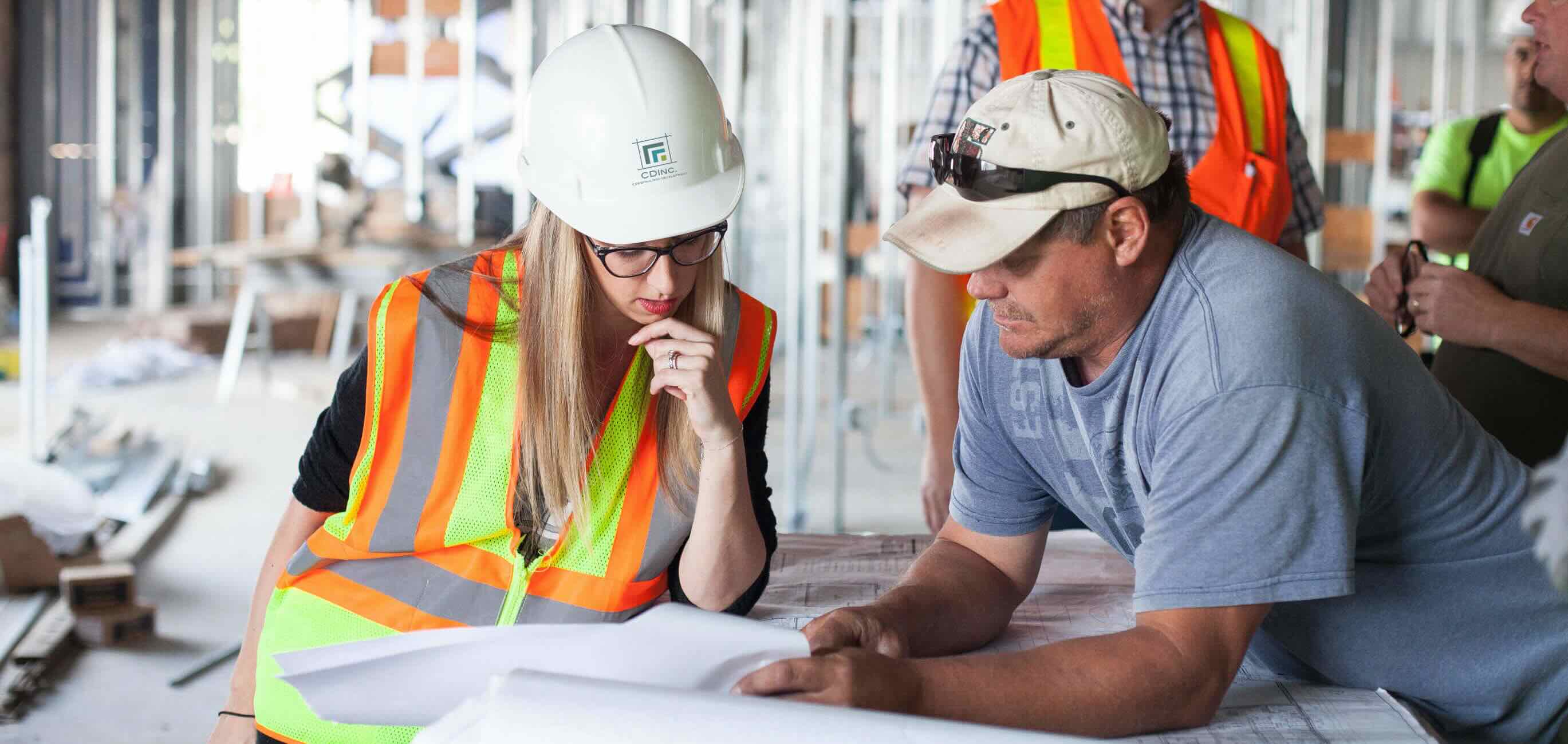

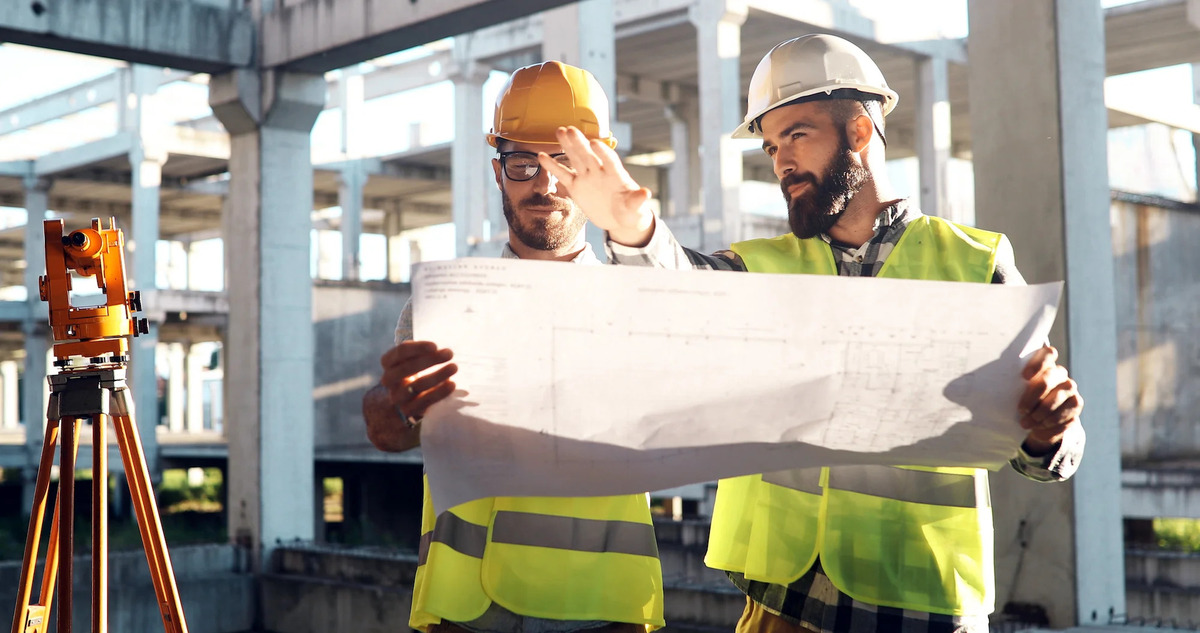
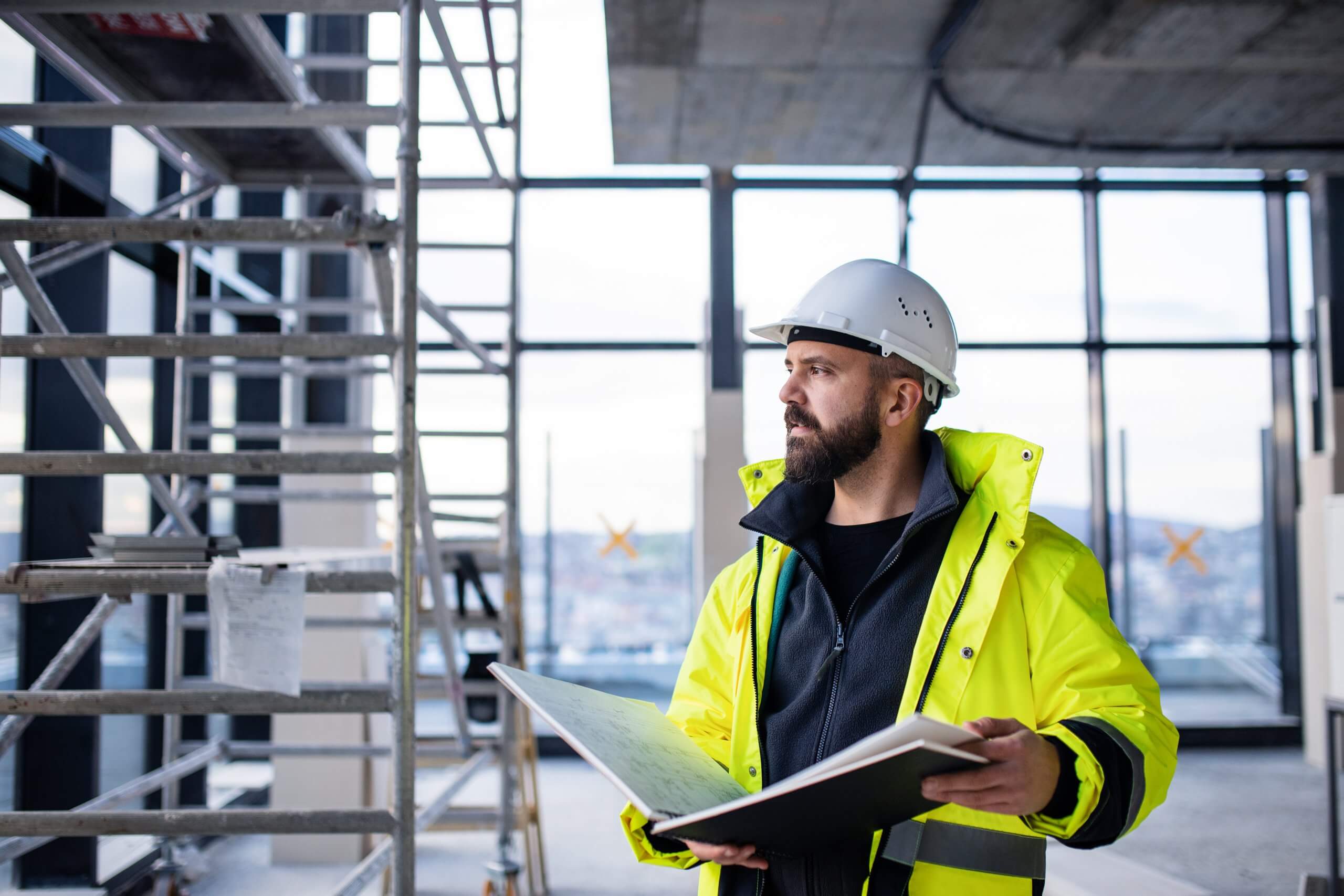


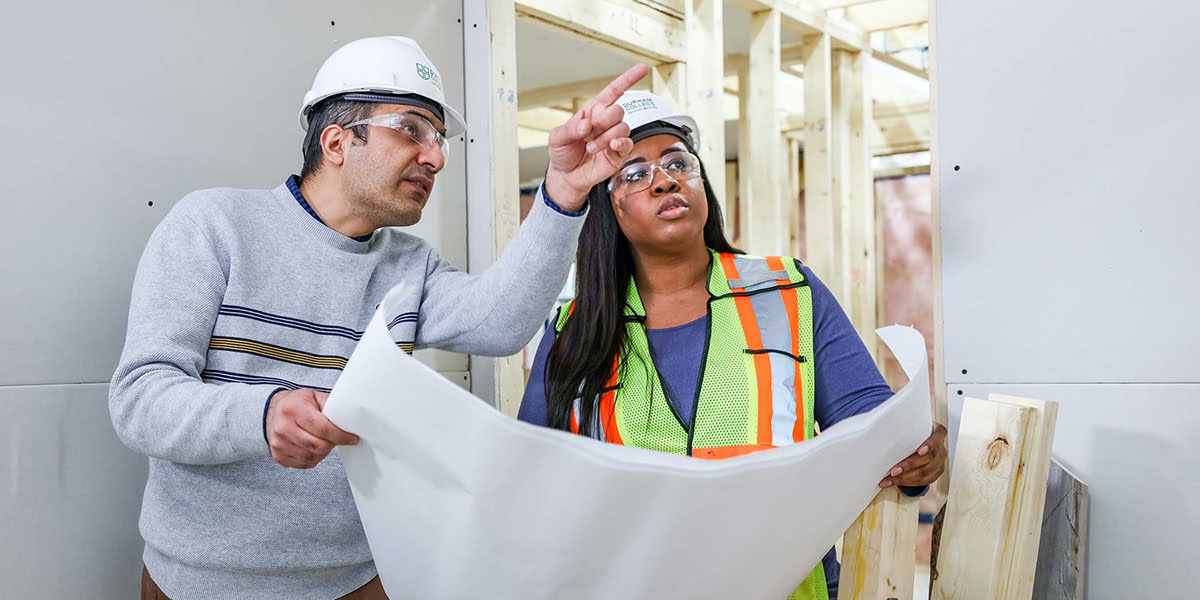
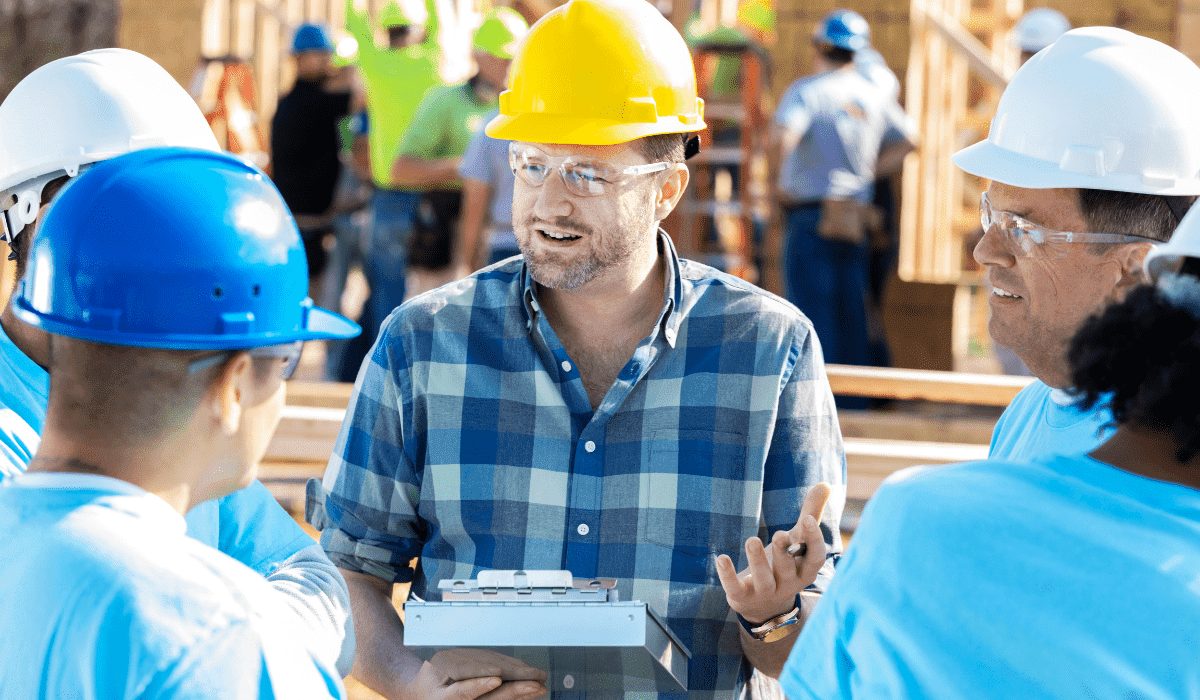
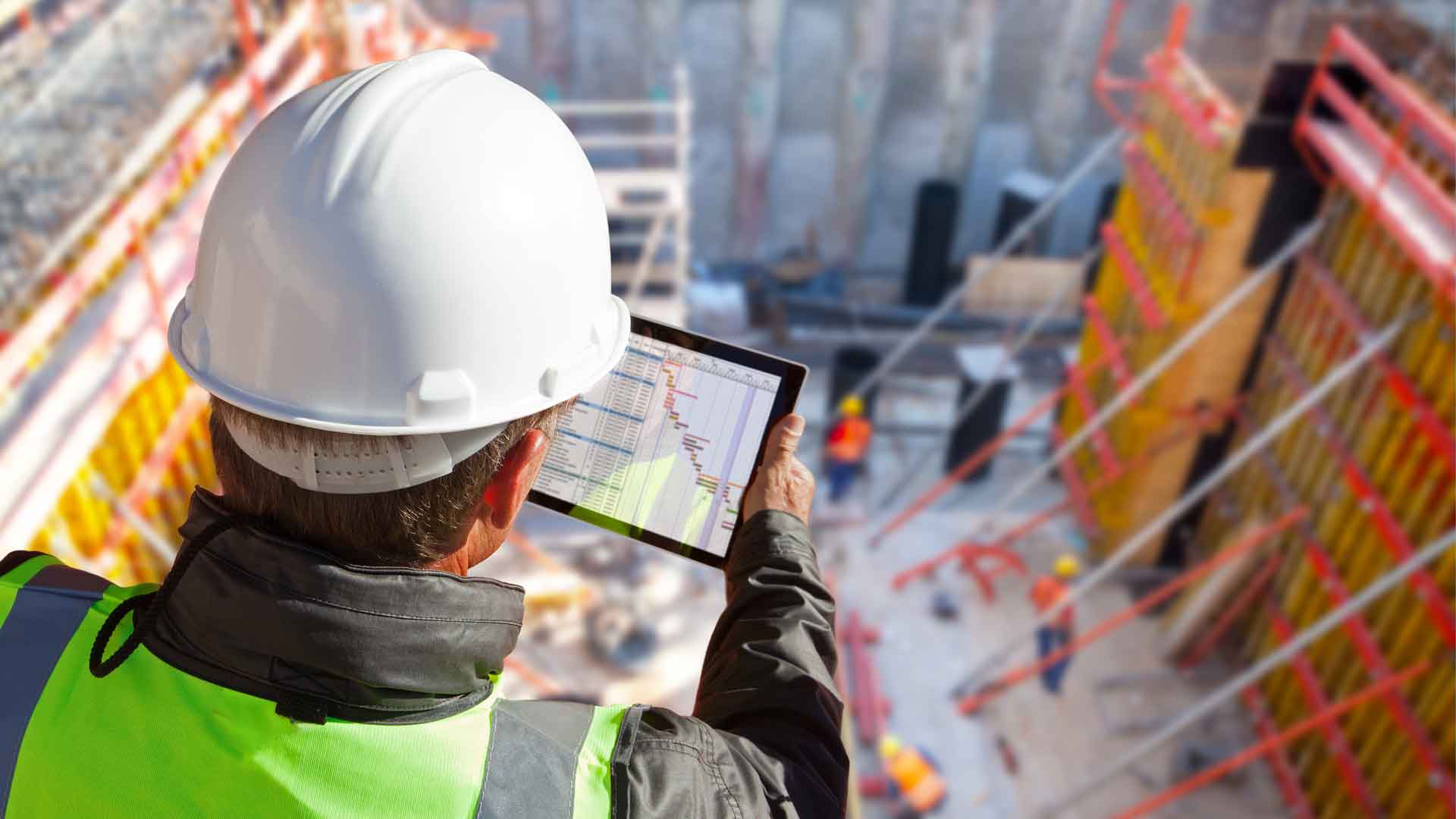

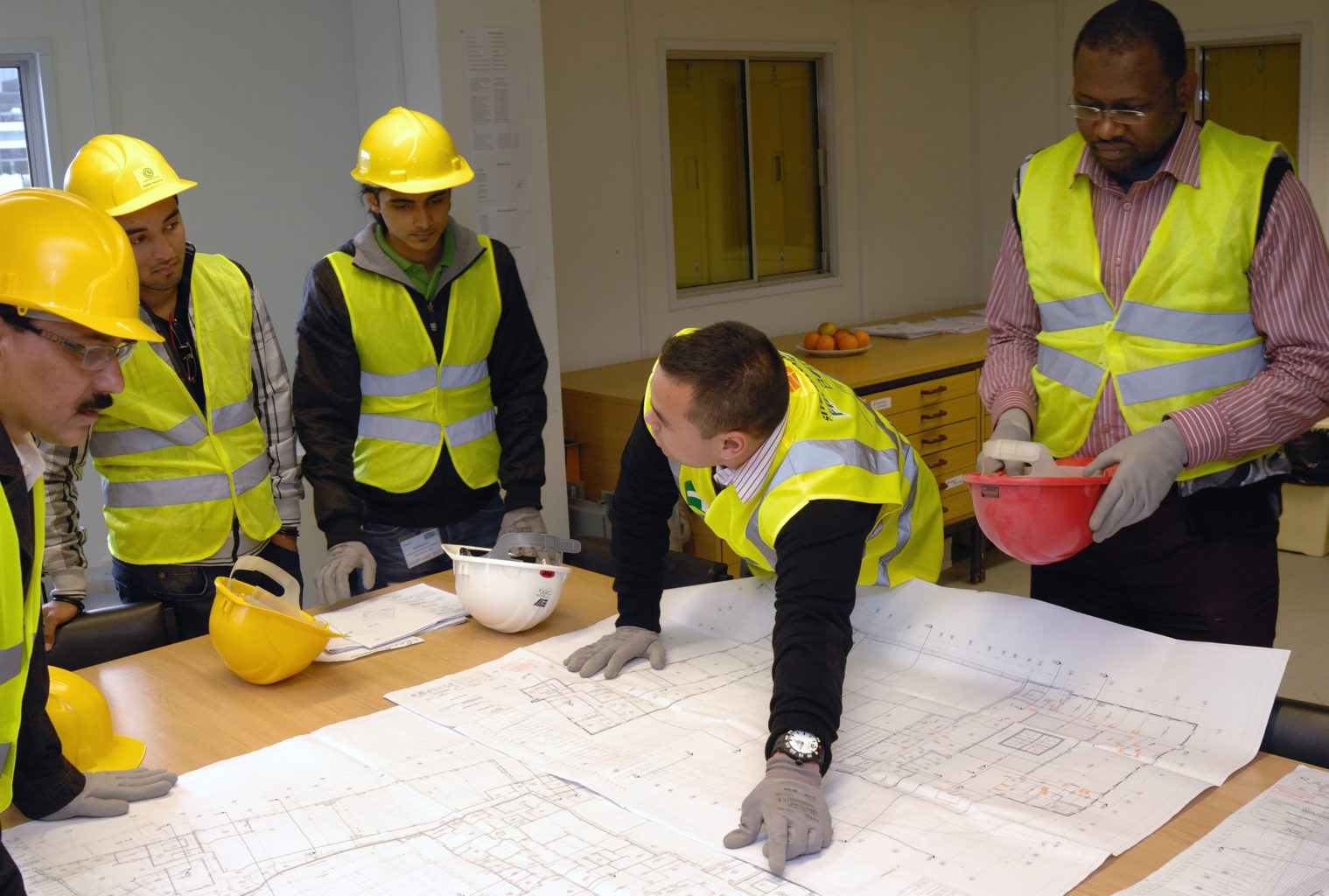

0 thoughts on “How To Be An Effective Construction Project Manager”